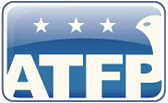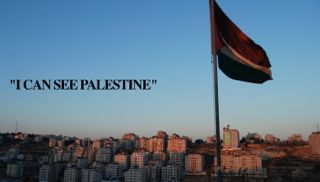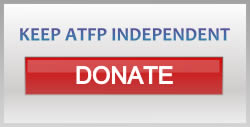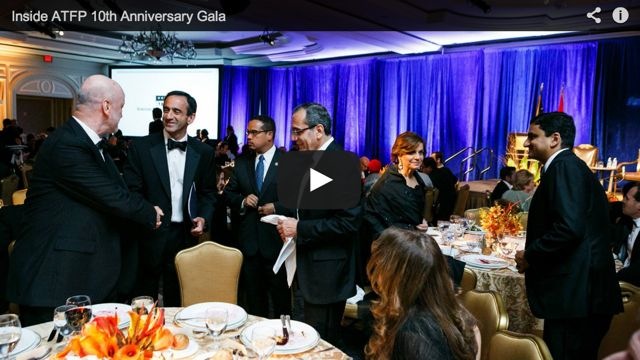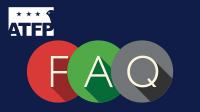Report to the Meeting for the Ad-Hoc Liaison Committee - May 2, 2008 - Back to Resources Page
The PNA has pursued and is progressing on its fiscal stability and sustainability agenda.
Report to the Meeting for the Ad-Hoc Liaison Committee - May 2, 2008 - Back to Resources Page
Economic growth has not yet materialized.
o The Palestinian economy has shown no signs of improvement in the months following the previous AHLC meeting. After an 8 % decline in GDP in 2006 and an estimated 0% growth rate for 2007, growth during the first quarter of 2008 has been constrained by continuing restrictions on movement and access. High rates of poverty and unemployment within the country have increased the number of individuals and families who are in need of social assistance. PCBS data notes that overall unemployment in OPT stood at 22%; Gaza unemployment rate was 33% with 19% unemployment in the West Bank (Q4 2007).
o The economic and humanitarian situation in Gaza continues to deteriorate despite all efforts by the PNA to ensure delivery of public services, payment of salaries to civil servants, and increasing humanitarian assistance to the needy. Higher rates of poverty and unemployment are evident in the Gaza Strip compared to the West Bank. The impoverished population has seen its income decrease and the vast majority of the population live below the poverty line. The results of the closure have been widespread. Gaza hospitals have suspended all non-emergency interventions due to the power cuts and fuel shortages. Numerous water wells are lacking fuel to operate, causing 15 to 20% of the population of Gaza to receive only 3-5 hours of water every four days. Sewage treatment has been halted and raw sewage is currently being dumped in the sea.
Improvements on access and movement have been negligible and violence persists.
o Movement restrictions have increased, despite the re-launch of peace negotiations in Annapolis. While there were expectations, following the Paris International Donor Conference that checkpoints and barriers would be reduced, they actually increased. Obstacles and roadblocks in the West Bank alone increased to 580 during the month of February 2008, up from a monthly average of 552 in the previous year. The closure imposed on the region by the GOI is the leading reason for the continued economic and humanitarian situation within the Gaza Strip. The Rafah, Karni, and Erez crossings remain closed, since June 2007, and most traffic continues to be systematically rejected.
o The GOI continues to support the establishment of hundreds of illegal housing units in Israeli settlements and construction bids are ongoing despite pressure from the international community to stop these illegal practices that undermine peace negotiations and unlawfully confiscate Palestinian lands and resources and are the key reasons for imposing most restrictions on movement and access.
o Furthermore, recurrent Israeli military incursions severely erode the credibility of the security forces and the government’s efforts to restore rule of law and protection of civilians. Violence within the West Bank and Gaza has continued. Continued GOI military incursions and bombings have resulted in the killings of over 436 Palestinians since the last AHLC meetings. These violations of international humanitarian law should be addressed by the international community. These actions undermine the political and peace initiatives.
The PNA has pursued and is progressing on its fiscal stability and sustainability agenda.
o The Government has undertaken measures to move towards fiscal sustainability and stability. The Palestinian Reform and Development Plan for 2008-2010 which reflects an integrated planning and budget framework was endorsed by the Cabinet and signed by the President on 30 March 2008. Fiscal developments during the first quarter were broadly in line with budget objectives. The budget deficit amounted to 317 million USD. Donors provided 525 million USD in budget support for the 1st quarter. This budget support, which exceeded expectations, resulted in a budget surplus of USD 209 million, which was used to repay substantial wage and private sector arrears as well as loans and advances from the banking sector.
o Budget support allocations for the first six months of 2008 exist and this will allow the PNA to continue to disburse budget as needed. However, budget support for the remaining six months of 2008 is critical. A 400 million USD budget support deficit exists (in addition to the funds already pledged/committed to in Paris.) The PNA needs these funds to meet its responsibilities. A top priority and request by the PNA is to urgently identify additional budget support for the second half of 2008.
o The PNA has embarked on an ambitious program of reform and good governance to support fiscal sustainability. A reduction of over 40,000 civil and security personnel was carried out by the end of March 2008. A general freeze on salary increases accompanied this measure. In addition, the PNA requested greater municipal/local government accountability and responsibility. These actions have resulted in increasing payment of utilities which will decrease overall net lending arrears in the end. The ambitious and bold actions taken by the Cabinet are currently under legal review; however, citizens continue to respond to these good governance measures. The finance management systems are moving towards full compliance with international standards of integrity and transparency are continuing; the Basic Finance Law was amended and established an Office of the General Accountant in the Ministry of Finance.
Aid assistance to public investments is materializing at a faster pace compared to previous periods of cooperation.
o Donors have shown an increasing interest in support to the Governance Sector. The programs on security reform and transformation, justice now, open and accountable government, and accountable local governance have been identified as key targets for revitalization of previous projects that had been halted/delayed and for new commitments of new funds. Many of the donors within this sector have actually initiated dialogue on support for these programs a limited number of new agreements have actually been finalized. Donors are encouraged to allocate support to the program on efficient and effective government that has yet to receive sufficient funds.
o Most of the programs in the Social Development Sector are grossly underfunded. Although, the World Bank and EC are the primary supporters of the Social Protection Reform program additional funds are needed for projects to support the most marginalized groups. A number of donors are now providing substantial support to TVET and education performance programs. However, programs on access and quality education require additional allocations of resources to meet the requirements defined in the PRDP. Both health programs are underfunded. The projects defined under health quality and health care programs are critical in helping to move back to a development agenda within the health sector. Allocations of resources within this sector are still primarily emergency and humanitarian assistance. Donors are encouraged to provide new allocations of resources to both of these programs. More international cooperation is required within the health sector. The projects defined under of health quality and health care programs are critical in helping to move back to a development agenda within the health sector. The remaining 4 programs: women empowerment, youth empowerment, employment generation, and culture have received virtually no funding at this time.
o The seven programs defined in the Economic Development Sector are all grossly underfunded. Less than 20% of the programs/projects identified in these programs have received support in terms of ongoing programs/projects or new commitments. Particular attention should be paid to projects within Trade Infrastructure and Facilitation, Industrial Capacity Development and Institutional Reform and Development. The upcoming Palestine Investment Conference’s success in part is dependent upon changes that should ensue by supporting an enabling economic environment within the OPT. The aforementioned programs/projects are designed to achieve this goal. Without adequate support (financial and technical) limited improvements within the economic sphere will follow.
o The Infrastructure Sector has seven programs identified. The only program that is underfunded at this time is the Road Safety program. The infrastructure sector differs from other sectors in that many of the projects that are defined require large investments, long design phases, and take over 3-4 years to implement. Hence disbursements over time are constrained. There are currently ongoing and committed funds in excess of what has been requested. However, in actuality few new projects have actually been finalized or new agreements signed. It is urgent that within the programs of water and water sanitation, solid waste management, road improvement and energy that these new projects be given attention and funds.
In follow up to the AHLC meeting (September 2007) and the Paris International Donor Conference, a noticeable improvement in PNA-Donor relations has occurred.
o Number of donors who have committed budget funds to CTA, PEGASE or PRDP-Trust Fund within the first quarter is greater than at any other period of time.
o Number of donors who have initiated and or completed annual reviews and consultations on their aid assistance has increased compared to any other previous reporting period.
o Transparency on allocations of funds, inputting information on aid commitments and disbursements is underway and cooperation amongst most donors is positive.
o Aligning aid assistance with the PRDP has become more of a priority for donors and they are increasingly targeting their funds to the government’s agenda.
To download this full report please click below:
| Attachment | Size |
|---|---|
| LetterofDevelopmentPolicy.pdf | 775.76 KB |
Report to the Meeting for the Ad-Hoc Liaison Committee - May 2, 2008 - Back to Resources Page
Did we miss something?
Click here to suggest a state building resource to be added to our fast-growing archive!
American Task Force on Palestine - 1634 Eye St. NW, Suite 725, Washington DC 20006 - Telephone: 202-262-0017

